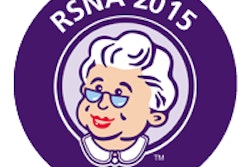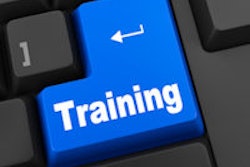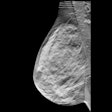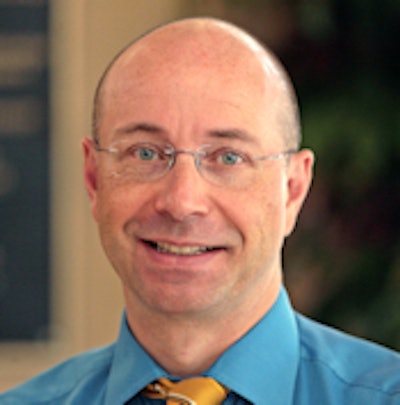
Breast imagers in the U.S. are required by the Mammography Quality Standards Act (MQSA) to read a minimum of only 480 exams per year to participate in a screening program, despite the fact that radiologists who read more mammograms -- at least 1,000 per year -- seem to perform better than those who read less. So how can radiologists who don't read a lot of mammograms get the practice they need?
A new company wants to help. MammoCoach offers an online teaching course that allows participants to earn continuing medical education (CME) credits and improve their screening mammography skills. The firm plans to introduce its course at the upcoming RSNA 2014 meeting.
 Dr. Markus Holzhauer.
Dr. Markus Holzhauer.MammoCoach is the brainchild of Dr. Markus Holzhauer, a radiologist in private practice at Windsong Radiology in Williamsville, NY, and Dr. Roland Talanow, PhD, founder of the radiology online community Radiolopolis and editor in chief of the Journal of Radiology Case Reports. In addition to Holzhauer and Talanow, the company includes a roster of faculty experts: Dr. Laurie Fajardo at the University of Iowa; Dr. Chris Flowers of the University of California, Los Angeles; Dr. Gopal Vijayaraghavan from the University of Massachusetts; and Dr. Gary Whitman at MD Anderson Cancer Center.
"I've had the idea for MammoCoach for a while, and I talked to Roland about it," Holzhauer told AuntMinnie.com. "I've always felt there's a need for better mammography screening training, and the Internet is the perfect platform for that. In the U.S., there are about 30,000 radiologists, several thousand of whom read less than 1,000 mammograms per year -- an amount that is not sufficient for optimum performance."
The course is offered as a personal (rather than institutional) subscription, and it allows users not only to practice reading mammograms, but also to get feedback on their own performance compared with the performance of their peers and to access the experience of the company's faculty readers. It consists of 1,000 mammograms that can be read in batches of 100. Ten percent of the cases are recalls, about 15 are biopsies, and five are cancers, according to Holzhauer and Talanow.
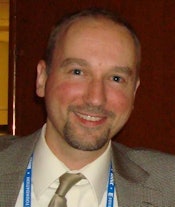 Dr. Roland Talanow, PhD.
Dr. Roland Talanow, PhD.The program's cost is a flat fee of $1,150, although it will be discounted by 30% beginning at RSNA through the end of the year. Those interested in the program can try out a first session of 100 cases by signing up for a free trial on the company's website.
"If you consider the price-benefit ratio of being able to do this training from home, it's a pretty good deal," Talanow said. "Taking a CME course not only requires the course fee, but also travel and hotel expenses."
The program works in three steps, Holzhauer said. The first step is reading the 1,000 screening mammograms and receiving performance feedback. In the second step, users can access a collection of 200 teaching cases that are explained in detail; based on the user's performance with the initial 1,000 cases, MammoCoach suggests cases pertinent to areas in which the user's skills are lacking. This case collection is also available as paperback book published by McGraw-Hill and titled Radiology Case Review Series: Breast Imaging.
Finally, users can read an additional 500 images that have a higher percentage of cancers, and check for improvement. Completing these additional 500 exams allows MammoCoach students to acquire 35 American Medical Association Physician's Recognition Award (PRA) CME credits.
"The initial 1,000 mammograms reflect a realistic screening environment, meaning that almost all of them have two-year or older priors," Holzhauer said. "A user's reading speed is individual: If you can do 50 exams per hour, the course will take about 20 hours to complete the first step. After each 100 cases, you see the results of your performance in terms of recall and cancer detection rate. And throughout the process, MammoCoach students can talk to faculty in a chat forum."
Holzhauer and Talanow hope to make institutional subscriptions to the MammoCoach program available in 2015, Talanow said.
"These days, the focus is on quality assurance," he told AuntMinnie.com. "MammoCoach could provide institutions with a tool to maintain their standards and improve their quality. And for countries that don't have a screening program at all, it could offer a valuable platform to train radiologists."
MammoCoach's initial target audience is radiologists who read fewer than 1,000 mammograms per year, Holzhauer said. But any radiologist can benefit from the program.
"Honestly, since there's nothing like it available, MammoCoach should appeal to any radiologist who would like to refine his or her reading and screening performance," he said.







